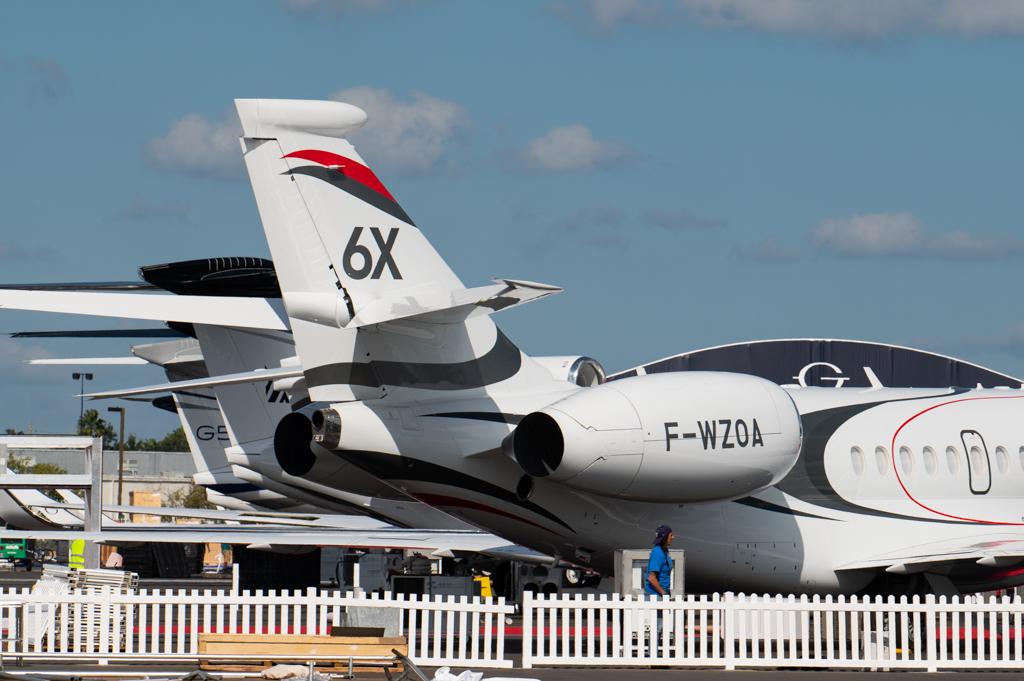
ORLANDO–Dassault continues to accelerate development of the ultra-long range, high-speed Falcon 10X, which remains on schedule to enter service in late 2025. Its new Falcon 6X large-cabin business jet, meanwhile, is tracking to a revised entry into service date of mid-2023.
Production of the 10X’s initial set of all-composite 110-ft.-span wings is underway at Dassault’s Biarritz facility in southwest France, while several key suppliers have already begun production of long-lead items including the landing gear and other major components.
“Everything so far has gone smoothly,” Carlos Brana, executive vice president at Dassault Civil Aircraft said at the NBAA Business Aviation Convention & Exhibition (NBAA-BACE). He added that several major test benches also continue at development sites across France. These include a flight simulator in Saint-Cloud; flight control and fuel systems test rigs at Istres and an environmental control system test bench in Merignac.
Plans are also underway for Rolls-Royce to begin tests next year of the Falcon 10X’s 18,000-lb.-thrust Pearl 10X engine on the company’s Boeing 747-200 flying testbed in Arizona. Initial engine tests began this year, with a focus on performance, reliability and evaluation of a new accessory gearbox that is designed for higher power extraction. The engine, which is designed to run on 100% sustainable aviation fuel, features a low-emissions combustor that incorporates additive layer manufactured tiles similar to those used in the recently certified Pearl 700.
In September, Rolls-Royce also announced the start of construction of a Pearl 10X production support center in Le Haillan near Bordeaux, France. The site, which will be finished in the first half of 2023, will form part of the flight test and production support system for the new Dassault aircraft.
The revised entry into service date of mid-2023 for Dassault’s new Falcon 6X large-cabin business jet comes after weathering supplier delays caused by the COVID-19 pandemic, the manufacturer said Oct. 17.
“We are in the final phase of certification, flying with FAA and [European Union Aviation Safety Agency (EASA)] pilots and the aircraft is performing very well,” Dassault Aviation Chairman and CEO Eric Trappier said at NBAA-BACE. “The Pratt & Whitney 812D engine has received its EASA certification and FAA certification is pending. Congratulations to the Pratt & Whitney team.”
Dassault debuted the 6X at the European Business Aviation Convention & Exhibition (EBACE) conference in May and is showing it for the first time on static display at NBAA-BACE. The manufacturer also announced that it will open a new 175,000-ft.2 service center accommodating all Dassault models in Melbourne, Florida, in 2024.
The manufacturer rolled out the first Falcon 6X at Bordeaux-Merignac, France, on Dec. 8, 2020; original plans called for the new jet to enter service this year. At this year’s EBACE, however, Dassault officials postponed the planned certification date to mid-2023, blaming pandemic-associated supplier delays.
Powered by twin PW812D turbofan engines, and featuring a Honeywell Primus Epic avionics suite, the Falcon 6X will have the largest passenger cabin in its class, a 5,500-nm (10,186-km) range and top speed of Mach 0.90. Transport Canada certified the PW812D engine last December.
Dassault launched the Falcon 6X soon after terminating the Falcon 5X program in 2017. It canceled the 5X after engine supplier Safran encountered repeated problems in the development of the planned Silvercrest engine.
Trappier said the first Falcon 6X full-flight simulator, a CAE 7000XR-series device, has been installed and is undergoing final checkout at CAE’s Burgess Hill training facility near London, with pilot training to begin next spring.

